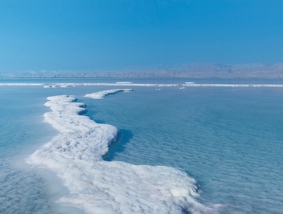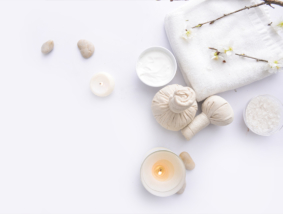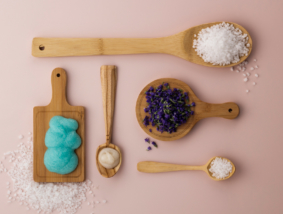Mud can be truly nourishing for the skin. From the beauty practices of ancient cultures to the menus of modern luxury spas, the skincare benefits of naturally occurring mud have stood the test of time and science. A true gift from nature, mud has been a go-to beauty staple across the globe.
Highly rich in minerals and enzymes, mud helps to stimulate circulation. By drawing impurities from pores, it detoxifies and exfoliates the skin naturally, gently, and effectively. It leaves the skin looking toned and feeling energized, soft, and refreshed. But, not all muds are created equal, some are more potent and come with more skin-loving nutrients, minerals, and vitamins than others.

So, without further ado, here are the 4 types of mud that are great for your skin.
Dead Sea mud
Cleopatra loved the effects of this mud on her skin so much that she founded the world’s first spa along the shores of the Dead Sea. Since then, Dead Sea mud, salt, and skincare formulas have become it-products for modern-day Cleopatras and beauty enthusiasts.
Unique and extremely mineral-rich, this naturally dark mud is found only in the Dead Sea. It contains generous amounts of 21 minerals including sodium, calcium, magnesium, potassium, bitumen, and bromine. Because the Dead Sea mud is so potent, it’s been shown to help with challenging skin conditions such as eczema and psoriasis. In regular skincare, it’s used to decongest the skin and reduce the visibility of pores. It improves all types of complexion and body skin, leaving behind a fresh and clear look and feel. So, you can apply a mud mask once or twice a week or enjoy Dead Sea mud in a bar-soap form on a daily basis.
Icelandic silica mud
Icelandic Silica mud is a thick white mud found in Iceland’s Blue Lagoon, which is a warm water reservoir. While Iceland has many natural hot springs, the Blue Lagoon is not one of them. While the lava that shapes the pool is natural, the water in the Blue Lagoon is a byproduct of geothermal energy produced at the nearby Svartsengi geothermal power plant.
The crates located along the edge of the lagoon contain silica mud, which helps to cleanse and detoxify the skin. Many people travel to the Blue Lagoon to take a dip in its thermal waters, which can be a unique experience in freezing winter temperatures.
Volcanic mud
Like the name suggests, wherever there’s ever been a volcano, there you can find volcanic mud. Because each volcano is different, the specific minerals found in this type of mud will differ. The volcano might be located in Argentina, Italy, Japan, the U.S., or anywhere else around the globe. Before purchasing volcanic mud, check its origin and the specific minerals the mud contains.
Moor mud
Moor mud is the result of herbs, flowers, and plants naturally decomposing over thousands of years. It’s usually dark in color. It’s mostly harvested in Turkey, Hungary, Ireland, France, and Austria – meaning it can have different mineral and trace element content depending on its location of origin. Moor mud is known to purify and hydrate the skin. Many cosmetics companies combine moor mud with other ingredients to offer a variety of facial and body masks.
You might also like

The Incredible Benefits of Dead Sea Minerals
June 8, 2020
Are Dead Sea products good for skin?
June 19, 2019




